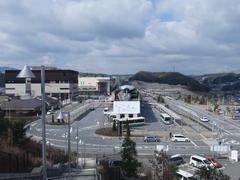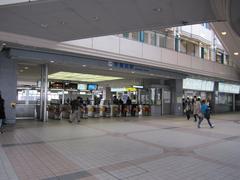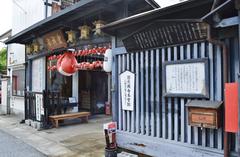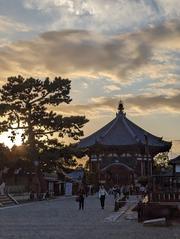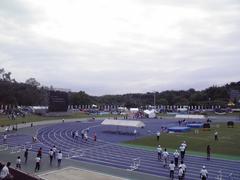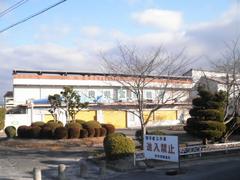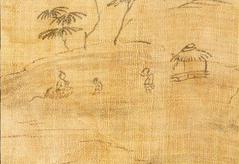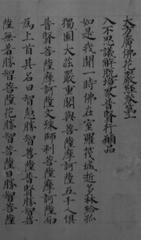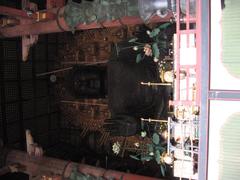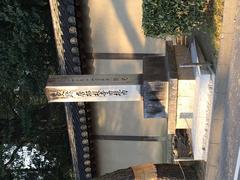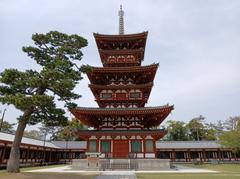Nara Women’s University Visiting Hours, Tickets, and History Guide
Date: 14/06/2025
Introduction
Nara Women’s University (NWU) stands at the crossroads of Japan’s pioneering women’s education and the profound cultural heritage of Nara, the nation’s first permanent capital. Founded in 1908, NWU is not only a symbol of academic excellence and gender equality but also an accessible and serene destination for travelers. Visitors can explore historic buildings, tranquil gardens, and an active academic environment nestled among UNESCO World Heritage Sites and vibrant city life (Nara Women’s University official site; Times Higher Education).
This comprehensive guide covers the university’s history, visiting hours, ticketing, campus highlights, accessibility, travel tips, and how to make the most of your visit by integrating NWU into a broader exploration of Nara’s world-famous attractions (PlanetWare Nara Attractions; Japanrar University Review).
Contents
- Historical Foundations and Cultural Significance
- Campus Architecture and Heritage
- Academic Contributions and Social Impact
- Visiting Hours, Tickets, and Campus Etiquette
- Getting There and Visitor Accessibility
- Campus Experience and Facilities
- Nearby Attractions and Suggested Itineraries
- Travel Tips and Seasonal Highlights
- Frequently Asked Questions (FAQ)
- Conclusion and Further Resources
Historical Foundations and Cultural Significance
Establishment and Early Years
NWU began as the Nara Women’s Higher Normal School in 1908, created to train female teachers during Japan’s modernization. Its founding was a major step for women’s education, following only Tokyo’s similar institution. The decision to base it in Nara—chosen after a dramatic tie-breaking vote in the Imperial Diet—placed the school in a city revered for its cultural and historical legacy (Nara Women’s University official site; Times Higher Education).
Postwar Transformation
Following World War II, the school was reorganized as Nara Women’s University in 1949, overcoming strict government limitations on university numbers per prefecture. This transition was achieved through the determined efforts of faculty and alumnae, cementing NWU’s place as a national university offering education from kindergarten to graduate school (MEXT history PDF).
Social and Academic Impact
NWU has consistently championed gender equality, producing generations of educators, scientists, and public leaders. Its curriculum, spanning humanities, sciences, and interdisciplinary studies, has evolved in response to social needs and global trends (NIAD-QE College Portraits).
Campus Architecture and Heritage
Designated Cultural Properties
The campus features two Important Cultural Properties: the Memorial Hall and the Main Gate. These preserved buildings exemplify early 20th-century Japanese academic architecture and stand as testaments to the university’s enduring legacy (Times Higher Education). The Memorial Hall is a centerpiece for ceremonies and events, while the Main Gate, with its historic design, seamlessly integrates with the city’s ancient ambiance.
Integration with Nara’s Landscape
Surrounded by iconic temples, shrines, and gardens, NWU’s campus is a peaceful enclave. Its lush greenery, traditional gardens, and seasonal floral displays reflect both educational philosophy and an appreciation for Nara’s spiritual and cultural traditions (Japanrar University Review; PlanetWare Nara Attractions).
Academic Contributions and Social Impact
Pioneering Women’s Education
NWU’s mission has always been to empower women through education. It remains distinctive in Japan for offering a full continuum of education—from early childhood to graduate studies—within its three main faculties: Letters, Science, and Human Life and Environment. The latter faculty is unique among women’s universities, focusing on interdisciplinary approaches to social and environmental challenges (Times Higher Education).
Research and International Collaboration
NWU is recognized for its research on local culture and natural phenomena. For example, studies on the famous Nara deer’s behavioral changes during the COVID-19 pandemic have attracted international attention (CNN Travel). The university maintains partnerships with global institutions, fostering cross-cultural exchange and academic cooperation.
Visiting Hours, Tickets, and Campus Etiquette
Visiting Hours
- Campus Grounds: Open to the public from 9:00 AM to 5:00 PM, Monday to Friday. Some areas and facilities may have restricted access during special events or university holidays.
- University Museum: Open on weekdays, 9:00 AM to 4:30 PM, typically closed on weekends and national holidays.
- Botanical Garden: Open on weekdays during academic terms. Check the university website for specific seasonal hours (NWU Visitor Information).
Tickets and Fees
- General Admission: Free for campus grounds, gardens, and most exhibitions.
- Special Exhibitions or Guided Tours: May require advance booking or registration; occasionally, a small fee applies.
Etiquette and Accessibility
- Maintain a quiet atmosphere, respecting ongoing academic activities.
- Photography is permitted outdoors; check signage for indoor restrictions.
- Guided tours are available by appointment, and self-guided tours are supported by QR-coded information plaques in multiple languages.
Getting There and Visitor Accessibility
Access
- By Foot: 6 minutes from Kintetsu Nara Station; 15 minutes from JR Nara Station.
- By Bus or Taxi: Several bus lines and taxis provide direct access from the main stations (Japanrar University Review; Visit Nara).
Accessibility Features
- Ramps, elevators, and accessible restrooms throughout the campus.
- Multilingual signage and staff support at the main entrance.
Campus Experience and Facilities
Architectural Highlights
- Historic Main Building: Early 20th-century design with a blend of Western and Japanese elements.
- Modern Academic Facilities: Recent expansions include sustainable, barrier-free buildings with ample natural light.
- Library and Learning Commons: Collections emphasize women’s studies, sciences, and humanities, with study areas overlooking gardens.
- Museum: Documents NWU’s role in women’s education and local cultural history.
Gardens and Outdoor Features
- Traditional Japanese gardens with seasonal highlights: cherry blossoms in spring, autumn foliage, sculptures, and water features.
- Tea house and event spaces open during festivals and cultural events.
Amenities
- Rest areas, vending machines, and a campus café.
- Public restrooms and shaded spots for relaxation.
Nearby Attractions and Suggested Itineraries
Major Historical Sites
- Nara Park: Home to the famous bowing deer (CNN Travel).
- Tōdai-ji Temple: Great Buddha Hall, UNESCO World Heritage Site.
- Kasuga Taisha Shrine: Known for its lantern festivals.
- Kofuku-ji Temple: Five-story pagoda and cultural treasures.
- Nara National Museum: Buddhist art and local history.
Sample Itinerary
- Morning: Nara Park & Kofuku-ji Temple
- Late Morning: NWU campus and museum tour
- Lunch: University café or local restaurant
- Afternoon: Tōdai-ji Temple & Nara National Museum
- Evening: Explore Naramachi district
Travel Tips and Seasonal Highlights
- Best Seasons: Cherry blossom season (late March–early April) and autumn (November) for scenic campus views.
- Footwear: Wear comfortable shoes for walking on uneven terrain.
- Combine Visits: Pair NWU with Nara’s historical sites for a full-day cultural experience.
- Check Events: University open days, cultural festivals, and lectures offer enhanced visitor experiences.
Frequently Asked Questions (FAQ)
Q: What are the general visiting hours?
A: Campus grounds are open 9:00 AM–5:00 PM on weekdays; specific facilities may have different schedules.
Q: Is there an entrance fee?
A: General access is free; some exhibitions or tours may require tickets or reservations.
Q: Are guided tours available?
A: Yes, by appointment via the university’s website or visitor center.
Q: Is the campus wheelchair accessible?
A: Most facilities are accessible; some historic buildings have limited access.
Q: Are there places to eat on campus?
A: A campus café and vending machines are available for visitors.
Q: How do I get to NWU from major Nara stations?
A: The campus is a short walk from both Kintetsu Nara and JR Nara stations and is served by local buses and taxis.
Conclusion
Nara Women’s University is much more than an academic institution—it’s a living heritage site showcasing Japan’s commitment to women’s education, architectural preservation, and cultural vibrancy. Its strategic location makes it a natural starting point for exploring Nara’s historic treasures. Whether you are a student, researcher, or traveler, NWU offers a welcoming and insightful experience.
Before your visit, check the Nara Women’s University official website for up-to-date information on visiting hours, tours, and events. Enhance your journey with the Audiala app for audio tours and insider tips, and consider sharing your experiences to help others discover the unique legacy of NWU and Nara.
Additional Resources
- Nara Women’s University official site
- Times Higher Education: NWU profile
- Nara Tourism Guide
- CNN Travel: Nara’s Bowing Deer
- PlanetWare Nara Attractions
- Japanrar University Review
For the best experience, view images of NWU’s historic main building, gardens in bloom, and campus events. Use keyword-rich alt tags such as “Historic main building of Nara Women’s University during cherry blossom season” for improved SEO.
